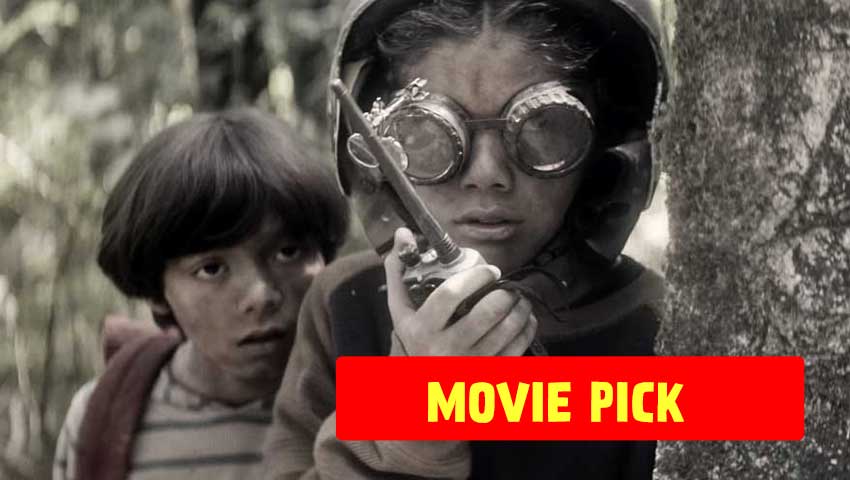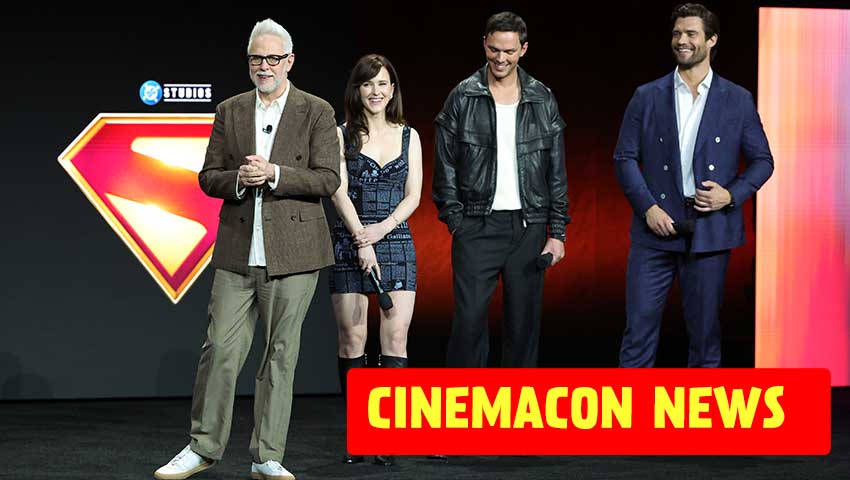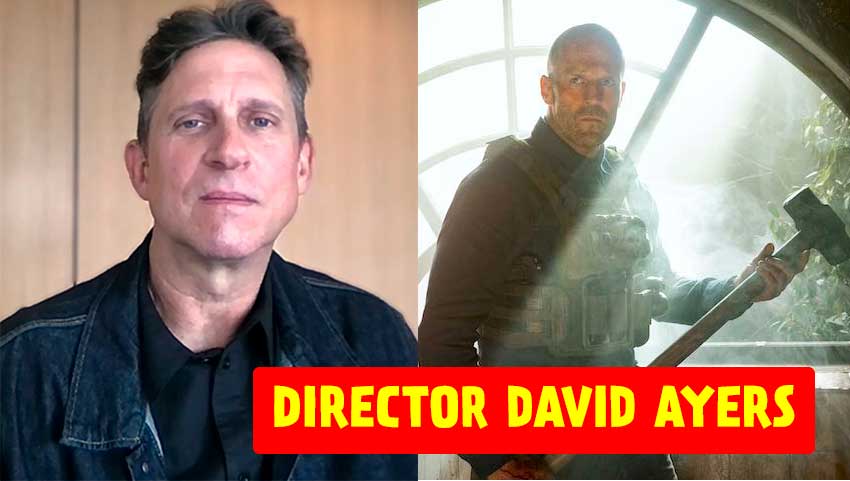Creating The Lion King's Pumbaa: Q&A with Tony Bancroft
- Details
- Last Updated: Tuesday, 12 November 2013 06:41
- Written by Lupe Haas
Article Index
 Q - Does drawing Pumbaa today still give you the same sense of satisfaction as it did 17 years ago?
Q - Does drawing Pumbaa today still give you the same sense of satisfaction as it did 17 years ago?
A - Tony Bancroft: Yes, I still love drawing the guy as much now as I did then. I actually feel like I draw him better now since I have had more years of practice.
Q - How has Pumbaa changed, if at all, since 1994?
A - Tony Bancroft: When I did my first designs of Pumbaa he had a much longer nose. I soon decided that making it shorter not only looked better but also was easier to turn in animation. Other than that, not much has changed.
Q - When you are in an important meeting, do you doodle on your notepad? What do you draw?
A - Tony Bancroft: I doodle all the time. My wife doesn't let me doodle in church anymore, but all the time in meetings. I draw Disney characters I have worked on and sometimes just people in the room. Anything to make others laugh!
Q - How did you know you wanted to become an animator?
A - Tony Bancroft: I originally wanted to be a comic strip artist like Charles Schulz from Peanuts. He is my idol actually. It wasn't until I got into college that I discovered a guy who was making fun little films with clay animation that I changed my mind. After that, I discovered CalArts (a school in Valencia, CA) that had a degree program in character animation, and whose teachers were all Disney artists. From there I got my first job at Disney, and the rest is history.
Q - Is Pumbaa involved in any of the deleted scenes we will be getting on the Diamond Edition?
A - Tony Bancroft: Yes! Disney produced a "bloopers reel" as a bonus feature for the Blu-ray that is great! They asked all of the original animators to come back and draw our characters doing flubbed lines from the original recording from 1994. It was so fun and so worth seeing.
Q - How has animation changed since working on The Lion King as far as the process of drawing a character?
A - Tony Bancroft: With traditional animation (2D), not so much. CG or 3D animation is the new way of making animated films. I love both forms of making animated films. I think the new technology is just a benefit for film makers to expand their vision of whole new worlds.
Q - What was it like working in the Disney animation studios?
A - Tony Bancroft: It was truly one of the best times of my life working on such classics as The Lion King, Aladdin, and Beauty and the Beast. Not only were we all young and passionate about the films we were working on, but we really were a family, too. Some of my best friendships in life were formed during those adventurous times at the studio.
Q - Tell us about your animation technique – what are some things you always strive for with your work?
A - Tony Bancroft: Since all of the characters I have done are primarily comedy characters, contrast in timing is key to my work. I spend much of my time on a scene playing with just how many frames to hold an expression or pose. I have a good eye for the difference of a drawing held for one film frame or two. Most human eyes can't even perceive the difference, but to me the difference may be in getting a laugh or not. Timing is everything!
Q - Were you a big Disney fan growing up?
A - Tony Bancroft: Yes! I remember as a boy seeing The Fox and The Hound at a drive-in theater with my family. My eyes were glued to the screen when the bear scene came on. I was amazed at the behavior of the dogs. They seemed to move in a realistic animal way, yet had human acting and mannerisms. I believed in the characters so much that I didn't even understand that they were drawings done by people. It wasn't until years later that I learned the animation process and felt like I had to master it. I still am growing as an animator every day.
Q - What have been the biggest highlights of your career so far?
A - Tony Bancroft: By far, animating Pumbaa in The Lion King. A close tie is directing the film Mulan for Disney. Both films and experiences were totally different, but I really am proud of the films and my memories of making them are very positive.
Q - How many drawings of Pumbaa did you do for the entire film?
A - Tony Bancroft: It seems like a gazillion. Not sure what the actual number is but here is a way of looking at it: There are 24 frames in a second of projected film. In that second, I will do from 12 to 24 drawings. If I animated about 3 seconds of animation in one week, my production manager was patting me on the back! Animation is a lot of work!
Q - What's a fun fact you learned while studying warthogs?
A - Tony Bancroft: I learned a lot about warthogs during our research time on The Lion King, but also about animals in general. One of the things I never knew was that there is usually a difference between the eye placement on the head of prey and predator. The prey (warthogs included) tend to have their eyes farther apart so that when their heads are down eating vegetation, they can still see prey sneaking up on them. The predators (lions and such) have their eyes more central on their head because they are always running after their prey. Mother Nature gave each side their own advantage. Pretty cool...
Q - The Lion King has been such a successful film – how has it affected your life?
A - Tony Bancroft: The biggest thing for me has been my kids friends who come over to my house will freak out when they see me drawing some of the characters from their childhood. They love it! I think that's the only time my kids think their dad is cool!
Q - How did you come up with Pumbaa? Was it hard to create him?
A
- Tony Bancroft: Actually, by the time the animators come onto a Disney film, there is already a lot of work done. In the case of The Lion King, there was already a character called Pumbaa who was a warthog that lived in the jungle with his friend, Timon. They had a few drawings of him by other artists, but no final design. They were still working on his role and personality in the film so my job was to help clarify his personality and create the final design that would be used on screen. I spent over 6 months just working on drawings of what he should look like in the film. Even more time was spent figuring out his personality and movement style. Then the work really began!
Q - Which character or actor in real life inspired you to do Pumbaa´s animation?
A - Tony Bancroft: I think Pumbaa is half me and half the voice actor, Ernie Sabella. I actually got to meet Ernie at the recording session and spent some time with him in New York while he was there doing a Broadway show. I studied his acting and movement patterns to put that into Pumbaa. Also, there is a lot of Ernie in Pumbaa's face. I had photos of Ernie up around my desk for two years while I worked on Pumbaa. Expressions of him smiling, frowning, yelling, etc., that were a big influence on me while I drew the warthog.
Q - How many artists worked on Pumbaa’s animation crew?
A - Tony Bancroft: That is an excellent question! On any larger role in an animated film, there usually is more than one animator assigned to that character. On a character like Simba (a main character), there could be as many as 6-8 animators only drawing that character. The role of the Supervising Animator (which was on Pumbaa) is to work with his crew to make sure they are drawing the character like you and keeping the performance consistent. On Pumbaa I had 3 other animators in my crew. They all added an element of his personality and success to the character.
Q - Why did they choose a warthog for a character?
A - Tony Bancroft: They wanted to use animals in the film that were indigenous to the African landscape, animals that would be unique to animation. Besides all that, Pumbaa and Timon (a warthog and meerkat) were just a funny pairing, I think.
Q - Who is your favorite Disney character?
A - Tony Bancroft: Pumbaa of course! Actually I really love animating and drawing Mickey Mouse too. He is one of the most deceivingly simple characters in all of Disney's animation history. I have never quite mastered him, so he is a challenge.
Q - Do you, as an animator, find the 3D converting process a tool that affects your drawings in a good or a bad way?
A - Tony Bancroft: For The Lion King, I think this new 3D stereoscopic version is generally more impactful because of the story. I think if the 3D helps to make the story better in some way, then it is worth doing. If we had the technology of stereoscopy in 1994 when we were making The Lion King, I think we would have used it. It's nice that it is available now.
Q - Have you seen the film on Blu-ray?
A - Tony Bancroft: Yes, and it is crisper and more vivid then when I originally saw it in theatres in 1994. I am just blown away by the colors and line work that can be seen in Blu-ray. The movie is better than it has ever been!
Q - What is your favorite 2D and your favorite CGI animated film that you've seen?
A - Tony Bancroft: My favorite 2D animated film is probably Disney's The Lady and the Tramp. I just love the animation in it. The way the animators brought such unique characters to life from an all animal cast was phenomenal. It was such a great inspiration for our work on The Lion King. My favorite CG movie is probably The Incredibles. I love the animation, color, lighting and story. It's just a perfect animated film to me.
Q - How much of hand-drawn animation is still used today? Can they be imported into digital format?
A - Tony Bancroft: Unfortunately, hand drawn or traditional animation is not used much anymore. Most audiences (at least in the US) seem to want to see more of the CG animated features. I personally think we will see a resurgence of traditional animation in future generations, but it may take some time.
Q - How do you keep your creative flair?
A - Tony Bancroft: Draw every day. I like to draw in a sketch pad and practice drawing things around me. If I go on a trip, I draw people at the airport. If I'm at home, I may draw my kids playing. It really doesn't matter as long as I keep my creative mind working, great things will come!
Q - What are you working on next?
A - Tony Bancroft: I'm working with a new animation company based in Glendale, CA. I have moved more into developing and directing my own CG animated features, and I love it. I just love bringing characters to life and making movies.
Q - What did you enjoy the most about animating for this movie?
A - Tony Bancroft: My favorite thing was making a new friend like Pumbaa. Creating an animated character is like creating a relationship. I spent so much time getting to know Pumbaa while creating him. He's like my child.
Q - What does it feel like to come back and animate a character after so long?
A - Tony Bancroft: It really is comfortable. It is like visiting an old friend you haven't seen in a while or hearing an old song on the radio that you grew up with. I just naturally feel the emotions and feelings I had back in 1994. Each drawing stroke just feels natural.
Q - How do the 3D renders and new interfaces change the way you do animation?
A - Tony Bancroft: The technology is different but the job of the animator never changes. Whether they use a pencil or a mouse, the animator's job is to bring a character to life: to create a performance that is heart-felt and real in the moment; to create the illusion of life and make a connection with the audience. Those things will never change.
Q - You have been working with classical animation (drawings). Did you work with digital animation this time? How different was it?
A - Tony Bancroft: In making the new 3D stereoscopic version of The Lion King there was no CG or digital animation added to the film. We just brought the new technology to add more perspective, depth and fullness to the film. It is still the same film we produced in 1994, but enhanced for more viewer satisfaction.
Q - What do you enjoy the most about being an animator?
A - Tony Bancroft: As a child, I wanted to be an actor in film and stage. After my first performance in the 2nd grade where I flubbed my lines and people laughed at me, I realized that maybe being in front of the camera was not for me. So, in animation, I get to act through my pencil to create new characters and performances that make audiences laugh, cry and feel for these characters and their journeys. To me, it is the best of everything I love doing--drawing and performing combined!
Q - How challenging was to become an animator at Walt Disney Studios?
A - Tony Bancroft: Back when I joined the Disney studies in 1989 there were not very many people in animation because there were not very many studios producing it. Disney was one of the only places to work in feature animation, so it was very competitive. Luckily, I had the right portfolio of drawings at the right time, and they gave me a chance. The day I was hired was a dream come true and one of the best days of my life!
Q - How long did it take the 3D conversion process of The Lion King, and what's your favorite scene in 3D?
A - Tony Bancroft: It was a four month process. To create the stereoscopic 3D version, a team of Disney artists worked closely with the original directors, Roger Allers and Rob Minkoff, and producer Don Hahn. I have seen it and think it's just beautiful. My favorite scene is where the wildebeest are stampeding towards young Simba. In 3D it is just amazing and puts the audience right in the shoes of the young lion. The technology really enhances what we had originally created for that scene.
Q - Any final thoughts on The Lion King in 3D?
A - Tony Bancroft: I find it fascinating how time changes things. When The Lion King was in the works at the studio, it was not thought to be the strongest picture in the cannon of ideas at the time. The crew brought on to work on it were the newest and greenest talent at the studio. We put our heart and soul into proving our abilities and the love we had for this story. When you see it now and how it has become a worldwide phenomenon those humble beginnings are all but forgotten. I actually think it was because of all of those obstacles that the film is as great as it is. I think it will be around for generations to come. Hakuna Matata!




